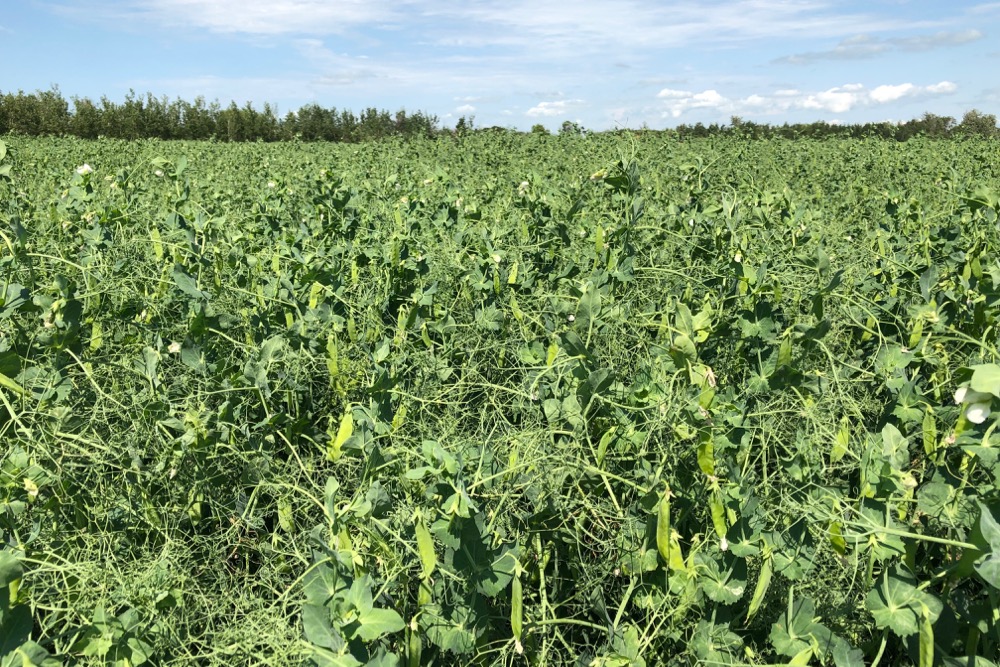Pulse weekly outlook: Slow start to Saskatchewan spring
Timely pulse seeding still expected
| 2 min read

File photo of a pea crop south of Ethelton, Sask. on Aug. 1, 2019. (Dave Bedard photo)
MarketsFarm — While below-normal temperatures have welcomed the start of spring, pulse seeding in Saskatchewan is expected to start on time in 2023 if the weather co-operates.
“We’ve had a slow start to spring,” said Saskatchewan Pulse Growers (SaskPulse) executive director Carl Potts. “It’s still a bit of time before seeding would normally start across the province. If temperatures end up being around normal, then I would expect seeding to start about on time.
“But it really remains to be seen what the weather would be like over the next three weeks or so.”
Potts anticipates a 10 per cent decline in seeded area for peas, as well as a five per cent reduction for lentils, which he attributed to competition with other crops and root disease in some areas.
On the other hand, Potts expects a large rise in chickpea acres due to strong prices — “probably something (like a) 30 to 35 per cent increase in chickpea area overall,” he said.
Some pulse growers in Saskatchewan may have to wait a while until the large snowpack fully melts before hitting the fields.
“We also know that in Western Canada, growers can, with good weather, seed the vast majority of their crop in approximately three weeks’ time starting in May,” Potts said. “At this point, we don’t really have any concerns about seeding. It’s good to see the moisture and we’ll see how the next few weeks shape out.”
Despite a slowdown in pea exports, Potts believes the pulse industry in Saskatchewan is on track to meet its export estimates and demand for pulses is growing and staying strong.
“Prices have come off as they have for some of the other crops more recently, with lower prices particularly for yellow peas and other major crops like wheat and canola,” he said.
“For the most part, I think crop rotations and cropping plans will be fairly locked in. There are always some swing acres that could change depending on the spring or depending on market conditions. But farmers are pretty locked into their crop rotations overall.”
— Adam Peleshaty reports for MarketsFarm from Stonewall, Man.


